Chester Fields 2024 Winners Announced
At the Chester Fields 2024 Opening Celebration on Saturday, July 27 the winners of The Polygon Gallery’s annual teen photography showcase were announced. Congratulations to Parneet Dhaliwal, from John Oliver Secondary School in Vancouver, and Talia Hunter and Caleb Wang, both from Sentinel Secondary School in West Vancouver. You can view their winning photos and artist statements below.
Chester Fields is a professionally juried photography exhibition for high school students. Initiated in 2009 and named for The Polygon Gallery’s former home at 333 Chesterfield Avenue, the programme proposes a theme for artists to respond to through an original work of photographic art.
This year’s prompt was inspired by the myth-making present in Martine Gutierrez’s ANTI-ICON: APOKALYPSIS, currently on view at The Polygon alongside new, richly storied work by Tau Lewis.
Chester Fields 2024: Mythmakers is on view now at The Polygon Gallery until September 8. A book with all the longlisted and shortlisted artists is available for purchase in The Diane Evans Bookstore.
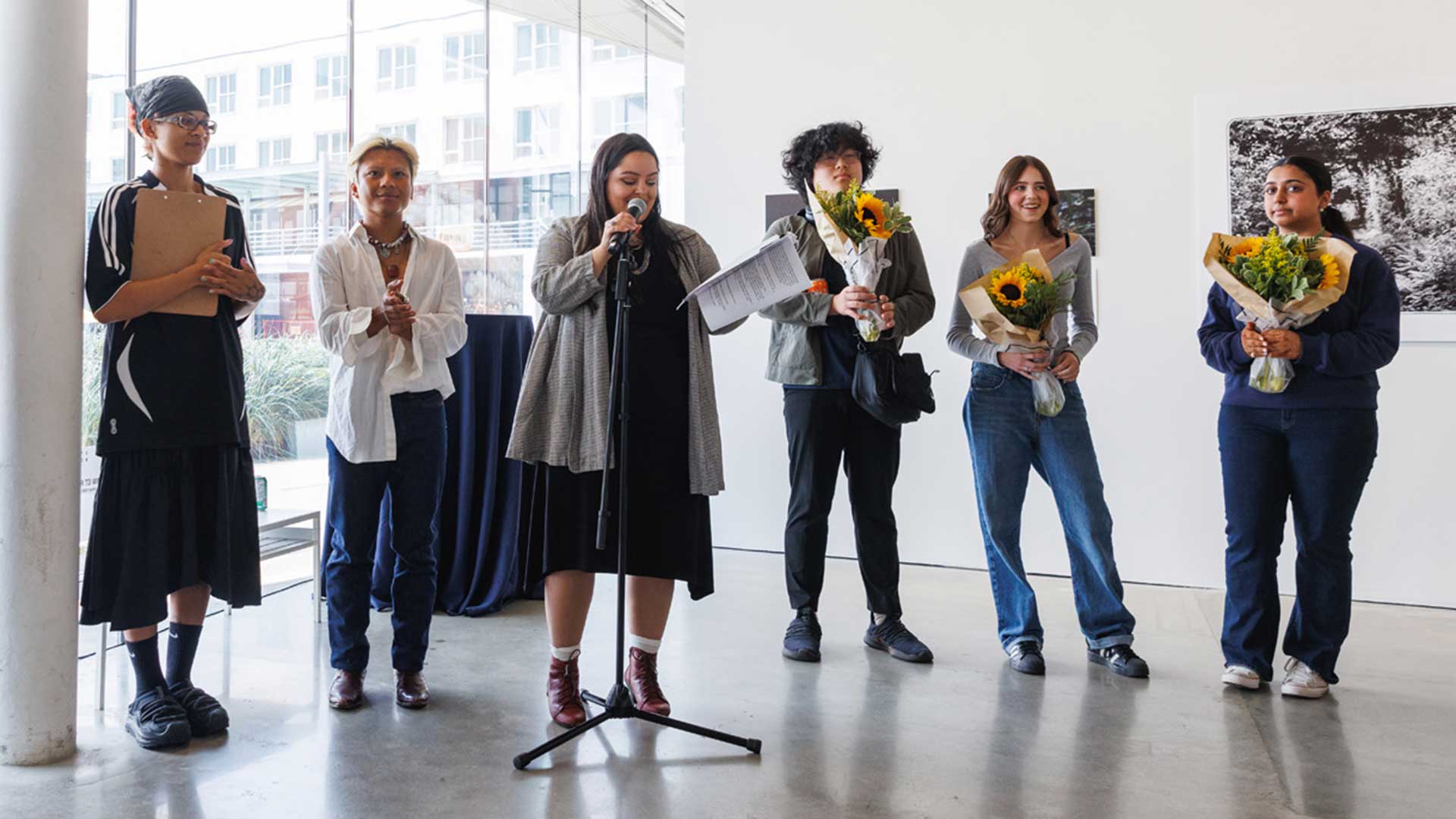 L-R: Polygon curatorial assistant Mada Phiri, Chester Fields juror Rydel Cerezo, Chester Fields curator Jana Ghimire, Chester Fields winners: Caleb Wang, Talia Hunter, and Parneet Dhaliwal. Photo: Alison Boulier
L-R: Polygon curatorial assistant Mada Phiri, Chester Fields juror Rydel Cerezo, Chester Fields curator Jana Ghimire, Chester Fields winners: Caleb Wang, Talia Hunter, and Parneet Dhaliwal. Photo: Alison Boulier
The exhibiting artists and winners were selected by a jury comprised of artist Rydel Cerezo; curator and co-founder of Pale Fire Projects, Amy Kazymerchyk; and artist and Massy Arts’ Community Arts Coordinator/Curator Faune Ybarra. Chester Fields is curated by The Polygon Gallery’s Jana Ghimire, TD Curatorial Fellow
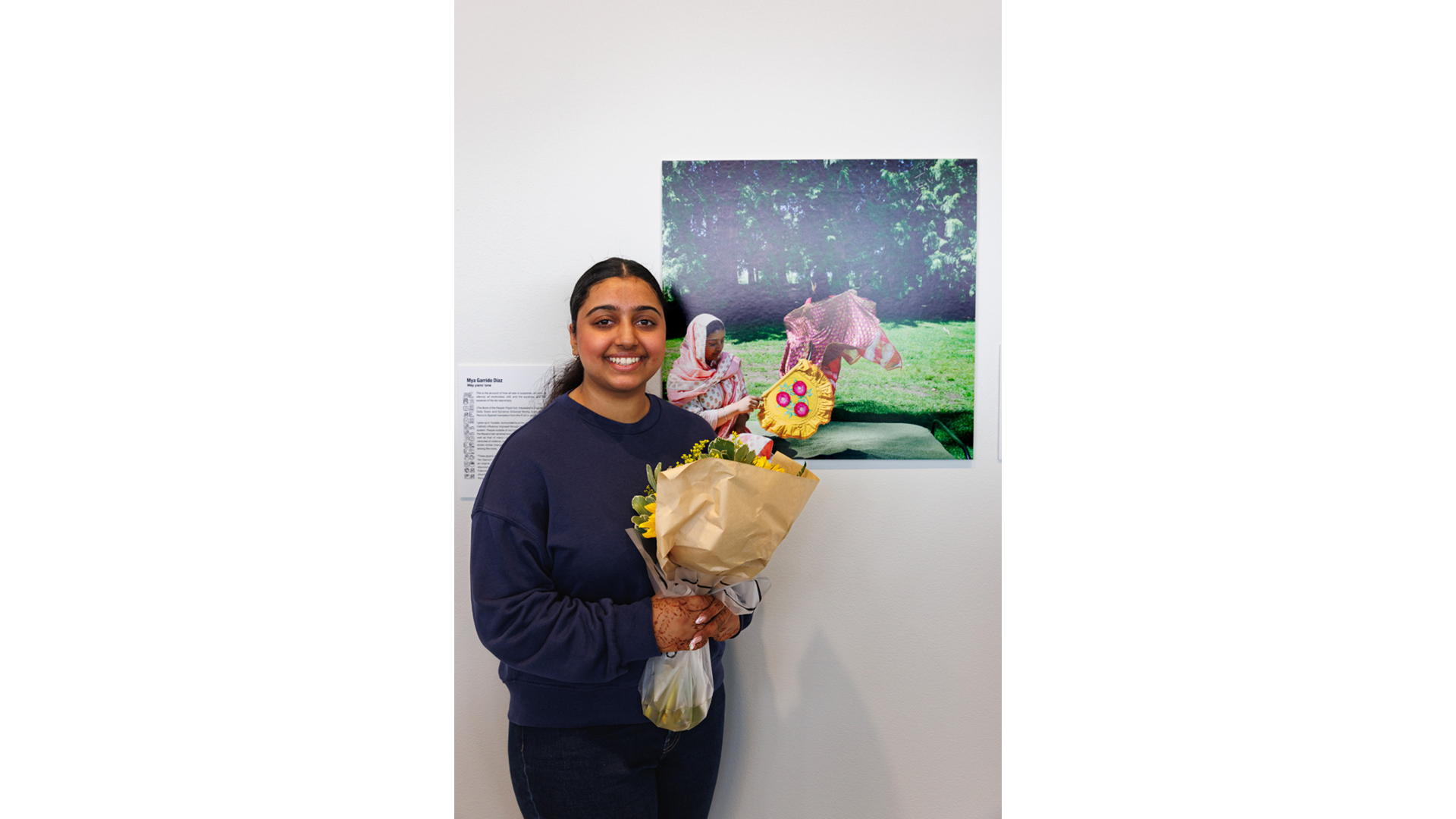
Parneet Dhaliwal
John Oliver Secondary School, Vancouver
Boliyan Malwana Diya
ਵੇਦ ਦੇ ਿਵਚਾਰ ਵਜਾ ਢੋਲਕੀ, ਥੰਬੀ ਦੇ ਨਾਲ ਸੋਨਾ ਧਰਤੀ, ਢੋਲ ਪਾਈ ਨਾਚ ਦੀਨਾਂ ਮਲਵਾਣਾ
Boliyan are sung in Punjabi and based on emotions and situations, as passed down through oral practice. They are started off by one woman before others take on and continue the boli. Boliyan can also be followed by gidha, a traditional folk dance accompanied by rhythmic clapping, which celebrates themes of joy. My image captures an empowering moment of two girls exploring boliyan in the present day. The girl on a manja (a woven bench) recites a couplet and waves her pakki (useful for cooling oneself and also as a symbol of cultural pride and beauty). The other woman, partway through her spin, is responding through gidha.
My own mother grew up singing boliyan in Malwa, a region particularly known for it. I am grateful for all the women in my life (especially my aunts, grandma, and great grandma), many of whom have recited boliyan, but also for those who have not. Becoming practiced in boliyan is a process of listening, learning, and connecting with the women in our lives in order to learn these happy teachings.
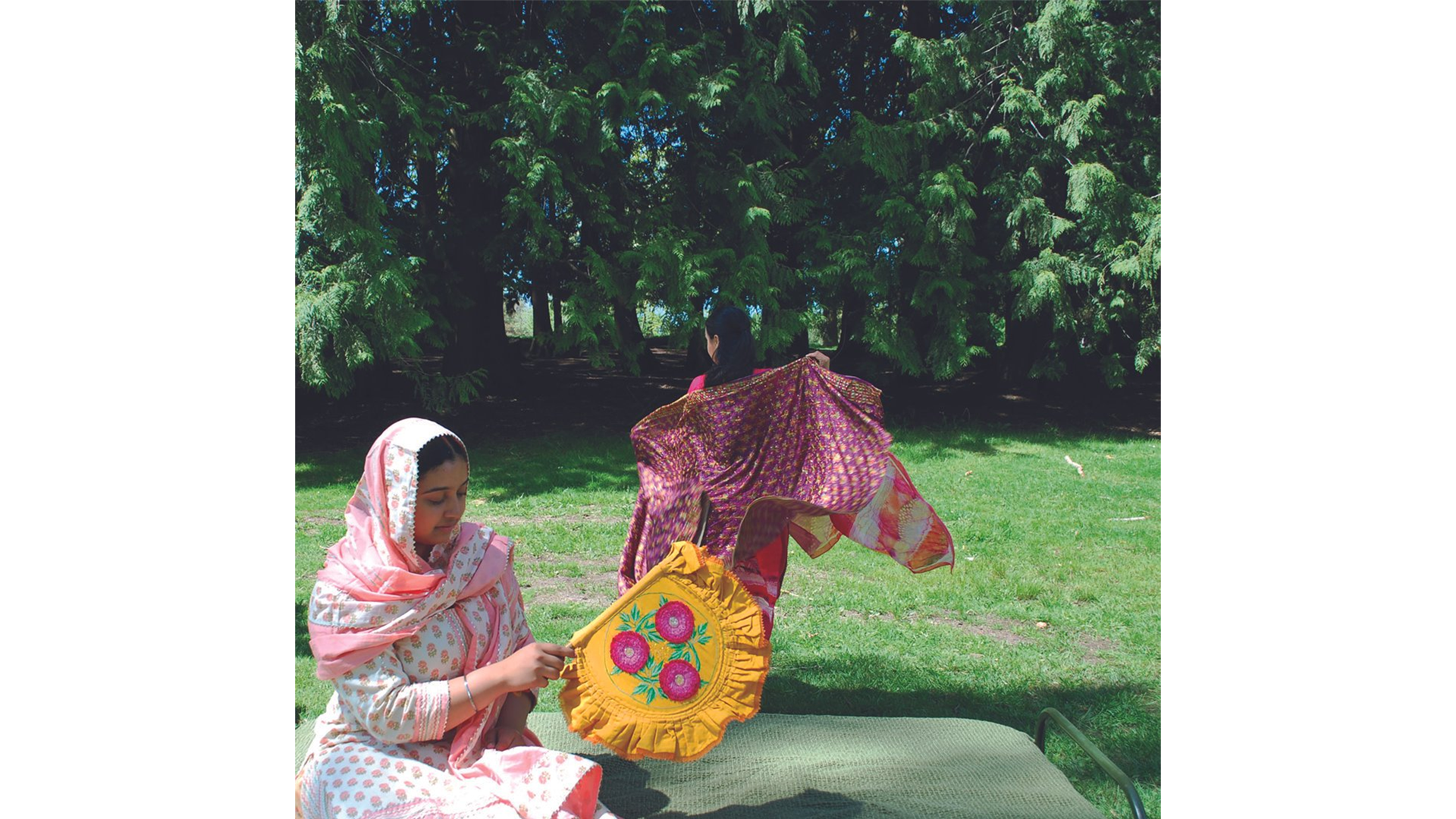

Talia Hunter
Sentinel Secondary School, West Vancouver
“I’m a woman, Phenomenally”
I’m a woman,
Phenomenally.
Phenomenal Woman,
That’s me.
(From “Phenomenal Woman” by Maya Angelou)
My image captures themes of struggle and resilience in women’s identities, aligning with Maya Angelou’s empowering poem from her 1978 compilation And Still I Rise. The subject’s direct gaze into the camera demonstrates both her vulnerability and her assertion of presence and agency within society. It echoes Angelou’s challenge to traditional representations of women as passive objects. Instead, I am portraying a powerful subject, reclaiming her visibility for herself and the world. I wanted my image to bring awareness to the strength and complexity of women’s experiences, helping to highlight their active and assertive roles in shaping their own narratives. The female gaze is a concept that challenges male-dominated perspective in art and media. As a woman myself, I feel it is important to use my art to shed light on the courage and resilience of women, promoting a more inclusive and empowering representation of our amazing female identity.
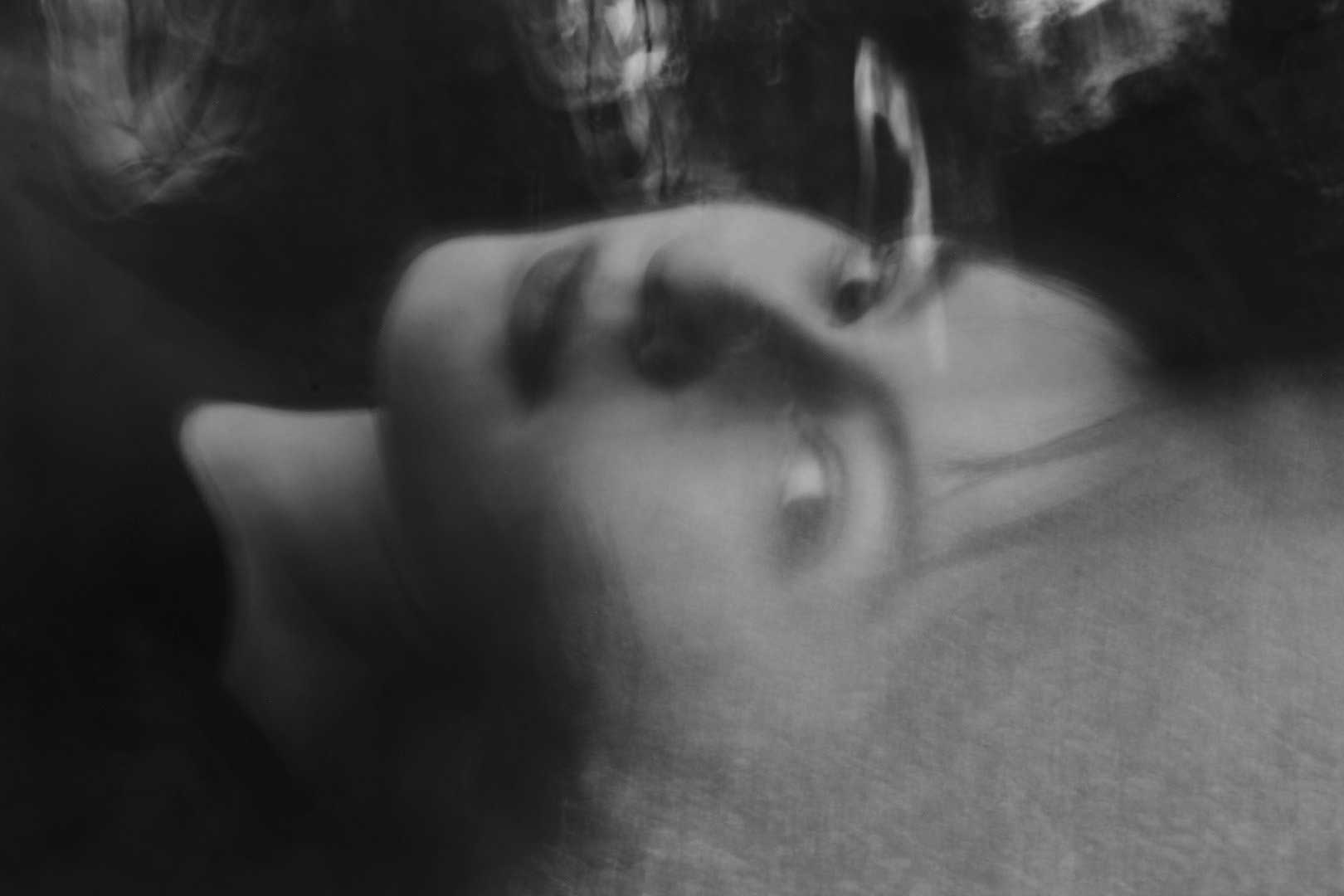

Caleb Wang
Sentinel Secondary School, West Vancouver
An Embrace of Sacrifice
[…] by night the liver grew as much again everyway as the long-winged bird devoured in the whole day.
(Hesiod. The Homeric Hymns and Homerica with an English Translation by Hugh G. Evelyn-White. Theogony. Cambridge, MA., Harvard University Press; London, William Heinemann Ltd. 1914.)
For this image, I wanted to focus on the idea that Prometheus was willing to accept Zeus’ punishment. This is based on many myths about Prometheus, compiled by the Ancient Greek poet Hesiod, who is thought to have been active c.750-650 BCE; he always wanted to do his own thing, so I concluded that he probably knew the consequences of his actions and still did them. To depict the myth as an image, I decided to portray myself as if I was offering my own liver to the Olympian gods. I sought out specific lighting to emphasize this and also to suggest that I offer my liver in hopes of a brighter future for humanity. Lastly, I decided to colour myself in grayscale to convey that, by giving up my liver (a Greek symbol of one’s passion), I have faded into an empty husk.
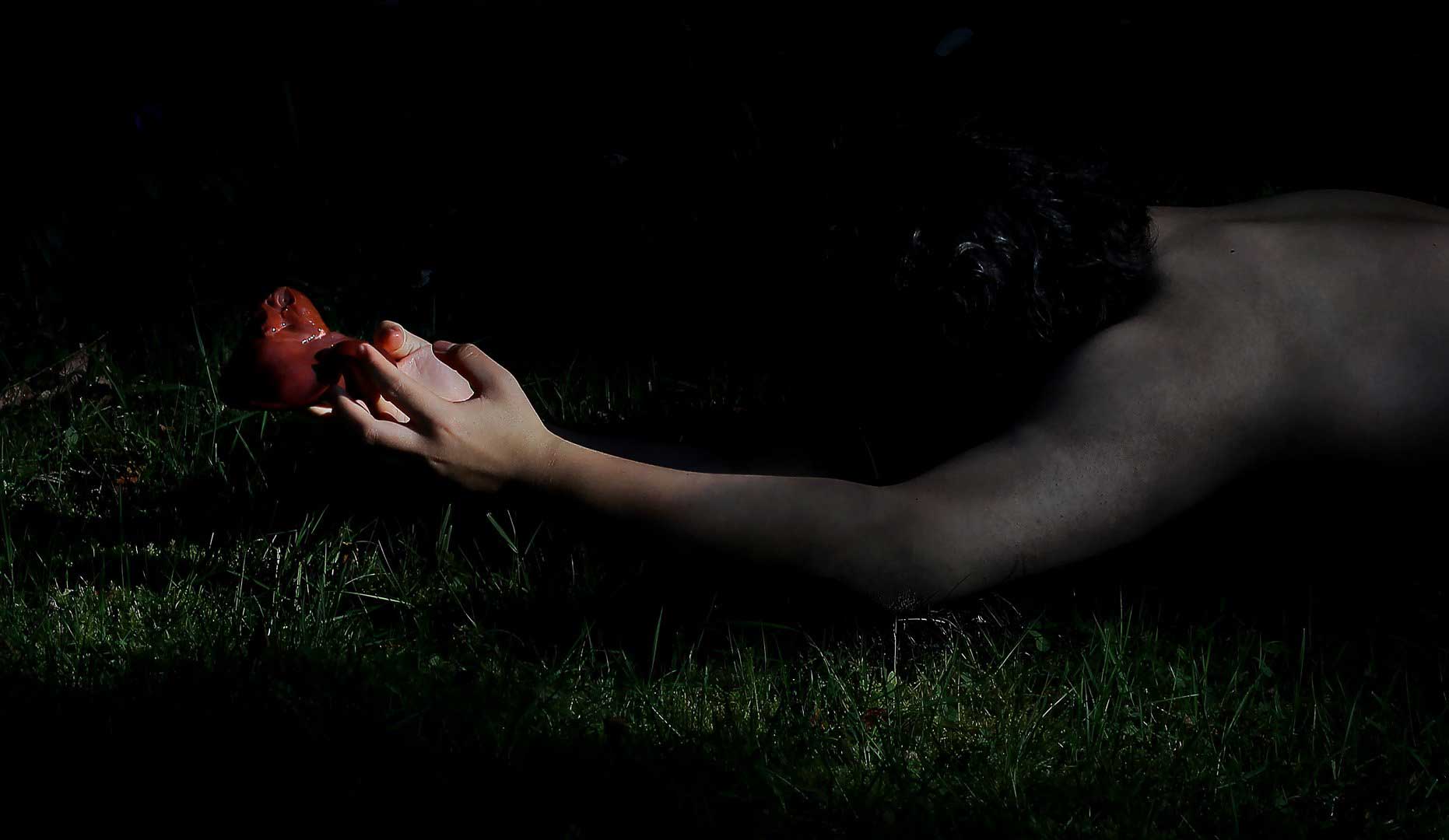
View all of the Chester Fields 2023 finalists here:
https://chesterfields.thepolygon.ca
Generously Supported By
The Hamber Foundation, Hemlock Printers, and The Lab Vancouver
Media Partner
North Shore News